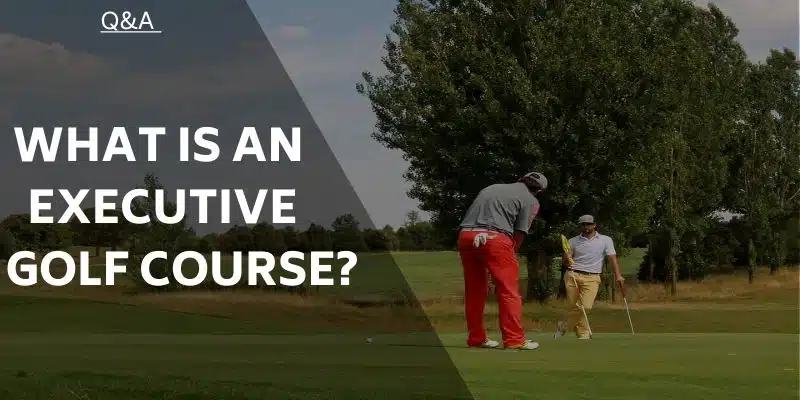Every golfer wants to launch the golf ball high and far, and so the question ‘what are the degree lofts of golf clubs’ is asked.
Golf club manufacturers are constantly designing new equipment ideas to increase either playability or distance. Manufacturers today make up sets with higher or lower lofts depending on their target market.
What is Loft?
Loft is the angle at which the face of the club “tilts” when the sole is laid flat on the ground. It is the mechanism used to get the golf ball airborne on each shot.
Another way to describe loft is it is the player’s “friend”, however, too often golfers use a loft that does not suit their game or their swing. It is better to play clubs with more loft than a lower loft. Carry through the air adds distance to the shot.
Putters also have loft, but this is a preference of individual players. More on putters later.
Standard Iron Lofts
The Standard Lofts for a set are as follows (in degrees):
- 3 iron: 20 degrees
- 4 iron: 25 degrees
- 5 iron: 28 degrees
- 6 iron: 31 degrees
- 7 iron: 34 degrees
- 8 iron: 37 degrees
- 9 iron: 41 degrees
As the game has evolved, technology has developed to make clubs for every type of golfer. Having said this, the better players make up their own sets specifically with loft in mind.
Irons have ideally 3 degrees loft between clubs and 3 degrees equates to between 10 to 15 yards on each shot.
Standard sets usually start from a 3-iron through to a sand-wedge.
Let’s discuss each iron:
Long Irons: (1,2,3,4)
A 3-iron has 20-degrees of loft and will carry approx 180-yards.
A 4-iron has 25-degrees of loft and will carry approx 170-yards.
Good iron players and those that play in windy conditions often add a 1 or 2-iron to the bag. These are extremely difficult to hit and control and require hours of practice.
The lofts can vary between 18 and 20-degrees. Yardages approx 190 to 200.
Tip: Most golfers try to hit these clubs too hard, resulting in “gummed” thin shots that run along the ground.
Swing the club like a 7-iron and see the difference.
Medium Irons: (5,6,7)
A 5-iron has 28-degrees of loft and will carry approx 160-yards.
A 6-iron has 31-degrees of loft and will carry approx 150-yards.
A 7-iron has 34-degrees of loft and will carry approx 140-yards.
Tip: These irons are easier to hit consistently and get airborne.
Accuracy rather than length should be the objective.
Short Irons: (8,9, PW)
An 8-iron has 37-degrees of loft and will carry approx 130-yards.
A 9-iron has 41-degrees of loft and will carry 120-yards.
A Pitching Wedge has anything between 45 to 50-degrees of loft.
Carry will be approx 105 to 110-yards.
These are the scoring irons in the bag and distance control and accuracy are called for.
Tip: Most golfers like to go to the range and smash the driver all day.
If you want to improve your score on the course, spend more time on these irons than any other.
Wedges: ( SW, GAP, LOB)
Wedges are “personal” feel clubs.
Sand wedges carry varying degrees of loft but generally between 56 and 58-degrees.
Tip: These clubs all have bounce and should be selected according to the type of sand conditions at your home course.
The softer the texture of the sand the more bounce required.
Gap wedges are exactly what the word refers to. It fills the gap between the Pitching Wedge and the Sand Wedge.
The lofts vary between 50 to 54-degrees.
Lob wedges carry lofts between 58 and 64-degrees. ( Phil Mickelson carries a 64-degree.)
Tip: This is a finesse club and requires many hours of practice to hit shots like Mickelson and the top pros on the tour.
Used mainly to play short “flop” shots over water or a bunker at the green.
Too many middle to high handicap golfers carry this club in the bag and without many hours of practice, this will INCREASE your score rather than decrease it.
If the ball is not sitting up in the grass allowing the player to slide the club under the ball, don’t try it!
Ideally, the difference in the degrees in the wedges should be 3 or 4-degrees, which equates to between 5 and 10-yards.
Note: As stated earlier, wedges are “feel” clubs and before purchasing any of these clubs, playing conditions at the home course should be taken into consideration. If turf conditions are hard and fast, less bounce should be the choice.
Not playing the right wedges can frustrate and damage the scorecard.
(The carry distances are estimates and will vary from player to player depending on the swing speed.)
Hybrids
The introduction of hybrids to golf is undoubtedly one of the most significant technological advancements in the golf industry.
Full sets of hybrid clubs are very popular for the social golfer.
Hybrids are much easier to hit consistently than long irons.
Many players, even on the tour, carry hybrids in the bag.
Lofts vary a great deal and the ability to launch them high in the air from the fairway and rough is a game-changer.
Lofts from 17 to 25-degrees replace the difficult to hit long irons. (1,2,3,4)
Medium iron replacement hybrids are extremely popular for women golfers and older male golfers. (5,6,7)
Lofts from 26 to 30-degrees.
The beauty about hybrids is that the large sole of the club gives confidence, which in turn brings enjoyment to the round.
Drivers
The club every golfer loves to hit, but unfortunately is possibly the most difficult after the 1 or 2 iron.
The biggest fault with amateurs is the lack of loft on the driver.
Because the pros hit 7 or 8-degree lofts does not mean that the rank amateur can emulate this.
The modern driver has loft settings on the club, but only the good amateur should take this into account when purchasing a club.
Driver lofts go as high as 12-degrees and this is a favorite club for seniors and women.
Get the ball in the air and the distance off the tee improves.
It will astound the player that a 10,5-degree driver will travel further than the 9-degree.
Playing in windy conditions may require a lower ball flight off the tee, but don’t go too low.
Most mid to low handicaps will benefit from playing nothing lower than a 9,5-degree.
Remember that this club has the longest shaft in the set, and requires practice to become proficient.
Check also: Best Golf Drivers in 2023
Fairway Metals (woods)
The range of fairway metals available allows for every skill level to find a club that suits their swing.
Lofts as low as 13-degrees are available on the 3-metal and can go as high as 15-degrees.
Many players find these lofts a little low due to the tight fairway conditions at their home course.
15,5 to 16-degrees are easier to hit consistently through the air.
The 3-metal is a great club for tight layouts where accuracy is at a premium off the tee.
5-metals are a fantastic club for all skill levels to get the ball airborne with ease and out of the semi-rough.
A 5-metal is equivalent to a 2-iron but easier to hit.
Lofts vary, but an 18 to 19-degree is very popular.
7 metals carry lofts of 21 to 23-degrees and equate to a 4-iron.
A fantastic recovery club from a fairway divot or bad lie in the rough.
9-metals carry lofts of between 23 to 26-degrees.
Another great club for tight lies in the rough.
Senior players love this club due to its forgiveness.
The ideal way to select the range or loft of these utility clubs is to test them on the driving range.
Calculate the distances achieved with each and fill your set around these.
Putters
Putting accounts for more than half the strokes played during 18 holes of golf.
It is a well-known fact that putting is a crucial part of the game.
If you cannot putt consistently well, your handicap will never improve.
“Drive for show, putt for Dough”. An old adage that has been proven on the pro tour.
Another area of practice that most amateurs dislike.
Read more: Best Golf Putters
Loft
The average loft on standard putters today is between 2 and 4-degrees.
Standard putter shaft lengths are between 33 and 35-inches.
The putting stance should be as natural as possible and will determine the shaft length best suited.
The shaft length has an impact on the position of the putter head in relation to the ground.
Ie. Tow-up or tow-down.
The ball position and the hand’s position at impact are crucial in deciding what loft of putter to use.
Phil Mickelson has used a loft of 7-degrees on his putter due to the “forward press” in his putting stroke.
(DeChambeau uses less loft on his driver!)
Shaft lean is described as forward or backward.
Hands in front of the ball deloft the putter.
More loft should be used to prevent a downward motion during the stroke to enable a smooth roll and avoid a “chopping” action. Hands behind increases the loft.
Less loft will ensure an upward stroke and a smooth role.
The best putters in world golf today strive to stroke the ball with an upward motion. This puts topspin rather than any sidespin.
Topspin allows the ball to roll smoothly on the putting surface and “dive” into the hole rather than spinning out.
Final Thoughts
As stated earlier, loft is the player’s friend. It allows for the ball to get airborne quickly and without having to try to lift it into the air.
From the driver through to the putter, using the correct loft will create a massive improvement to your game.
Knowing the distance that the player hits each club is a must as it removes the guesswork and doubt when playing shots during the round.
It certainly helps the scorecard when playing on a strange course.
If your friends brag about hitting low lofted drivers but hit the ball all over the park, let them have their fun.
But to improve and become a better player, get the loft that suits your swing.
Most golf retail outlets and professional teaching pros can help you make the right decision, at very little cost.
Test the clubs on the driving range and enjoy the experience.
Related Articles
- How Many Degrees Of Loft Are Between Irons?
- How To Improve Your Chipping
- 7 of The Best Mallet Putters To Improve Your Putting Game
Nick is the founder of GolfSpan and an avid golfer. He's not quite a pro but has over 15 years of experience playing and coaching golfers worldwide. His mission is to bring the golfing community a better experience when it comes to choosing the right golf gear and finding the right setup for your game.






